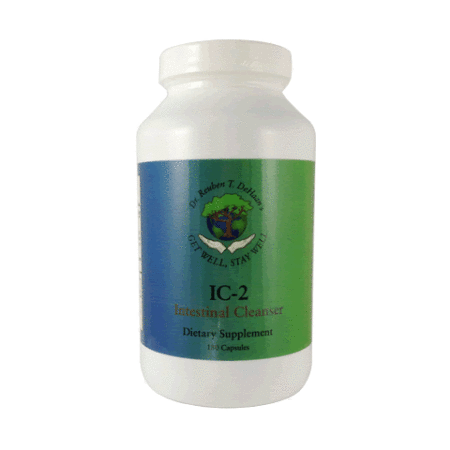 Filariasis is the name for a group of tropical diseases caused by various thread-like parasitic round worms and their larvae. They are transmitted to humans mainly by the black fly (lays eggs in a skin wound) and mosquito bite. In all cases, a mosquito first bites an infected individual then bites another uninfected individual, transferring some of the worm larvae to the new host. Once inside the body, the larvae migrate to a particular area of the body and mature to adult worms.
Filariasis is the name for a group of tropical diseases caused by various thread-like parasitic round worms and their larvae. They are transmitted to humans mainly by the black fly (lays eggs in a skin wound) and mosquito bite. In all cases, a mosquito first bites an infected individual then bites another uninfected individual, transferring some of the worm larvae to the new host. Once inside the body, the larvae migrate to a particular area of the body and mature to adult worms.
Over a hundred million people in the tropical and subtropical areas of southeast Asia, South America, Africa, and the islands of the Pacific are infected by this debilitating parasitic disease. While filariasis is rarely fatal, it is the second leading cause of permanent and long-term disability in the world.
 Filariasis is characterized by fever, chills, headache, and skin lesions in the early stages. If untreated, it can progress to include gross enlargement of the limbs and genitalia in a condition called elephantiasis, which results in lymphatic filariasis. Filariasis is classified into three distinct types based on the part of the body that becomes infected:
Filariasis is characterized by fever, chills, headache, and skin lesions in the early stages. If untreated, it can progress to include gross enlargement of the limbs and genitalia in a condition called elephantiasis, which results in lymphatic filariasis. Filariasis is classified into three distinct types based on the part of the body that becomes infected:
- subcutaneous filariasis infects the areas beneath the skin and whites of the eye (African eye worm)
- serous cavity filariasis infects body cavities, but does not cause disease
- lymphatic filariasis affects the circulatory system that moves tissue fluid and immune cells
Several different types of worms can be responsible for each type of filariasis, all of which have been included in this detox remedy.
Detoxification of all Filarial and related toxins
Heal and regenerate any skin issue.
The natural alternative to pepto-bismol.




 There are different species of the Entamoeba parasite. While humans can be hosts to at least six species of Entamoeba, only one species is thought to cause disease. Entamoeba parasites are transmitted by the ingestion of food or water supplies which have been contaminated by the fecal material of infected animals. They burrow through the intestinal wall and spread through the bloodstream to infect other organs, such as the liver, lungs and brain.
There are different species of the Entamoeba parasite. While humans can be hosts to at least six species of Entamoeba, only one species is thought to cause disease. Entamoeba parasites are transmitted by the ingestion of food or water supplies which have been contaminated by the fecal material of infected animals. They burrow through the intestinal wall and spread through the bloodstream to infect other organs, such as the liver, lungs and brain. Entamoeba gingivalis can be found within the spaces between the teeth and is associated with periodontal disease and gingivitis. As the photo implies, you can get this little fellow simply by kissing someone that has it. That might remind you to floss, but even better than flossing is avoiding foods that feed the germs in the mouth. These are mainly refined carbohydrates.
Entamoeba gingivalis can be found within the spaces between the teeth and is associated with periodontal disease and gingivitis. As the photo implies, you can get this little fellow simply by kissing someone that has it. That might remind you to floss, but even better than flossing is avoiding foods that feed the germs in the mouth. These are mainly refined carbohydrates.
 Adult tapeworms may infect humans, canids, felines, bears, pinnipeds, and mustelids, though the accuracy of the records for some of the nonhuman species is disputed. Immature eggs are passed in feces of the mammal host (the definitive host, where the worms reproduce). After ingestion by a suitable freshwater crustacean such as a copepod (the first intermediate host), the coracidia develop into procercoid larvae. Following ingestion of the copepod by a suitable second intermediate host, typically a minnow or other small freshwater fish, the procercoid larvae are released from the crustacean and migrate into the fish's flesh where they develop into a plerocercoid larvae (sparganum). The plerocercoid larvae are the infective stage for the definitive host (including humans).
Adult tapeworms may infect humans, canids, felines, bears, pinnipeds, and mustelids, though the accuracy of the records for some of the nonhuman species is disputed. Immature eggs are passed in feces of the mammal host (the definitive host, where the worms reproduce). After ingestion by a suitable freshwater crustacean such as a copepod (the first intermediate host), the coracidia develop into procercoid larvae. Following ingestion of the copepod by a suitable second intermediate host, typically a minnow or other small freshwater fish, the procercoid larvae are released from the crustacean and migrate into the fish's flesh where they develop into a plerocercoid larvae (sparganum). The plerocercoid larvae are the infective stage for the definitive host (including humans). After ingestion of the infected fish, the plerocercoids develop into immature adults and then into mature adult tapeworms which will reside in the small intestine. The adults attach to the intestinal mucosa by means of the two bilateral grooves (bothria) of their scolex. The adults can reach more than 10 m (up to 30 ft) in length in some species such as D. latum, with more than 3,000 proglottids. One or several of the tape-like proglottid segments (hence the name tape-worm, interesting that the segments, seen in photo, also resemble sushi -YUM) regularly detach from the main body of the worm and release immature eggs in fresh water to start the cycle over again. Immature eggs are discharged from the proglottids (up to 1,000,000 eggs per day per worm) and are passed in the feces.
After ingestion of the infected fish, the plerocercoids develop into immature adults and then into mature adult tapeworms which will reside in the small intestine. The adults attach to the intestinal mucosa by means of the two bilateral grooves (bothria) of their scolex. The adults can reach more than 10 m (up to 30 ft) in length in some species such as D. latum, with more than 3,000 proglottids. One or several of the tape-like proglottid segments (hence the name tape-worm, interesting that the segments, seen in photo, also resemble sushi -YUM) regularly detach from the main body of the worm and release immature eggs in fresh water to start the cycle over again. Immature eggs are discharged from the proglottids (up to 1,000,000 eggs per day per worm) and are passed in the feces.
 This parasite is most often found in the intestines and rarely causes infections, even in people with compromised immune systems. Less than 5 percent of people in the United States are infected with the organism. Chilomastix makes it into the human body via simple food or water contamination or the fecal-oral route. This means that transmission occurs from the feces of an infected individual to the mouth (by ingestion) of a new host. Even the tiniest amount of fecal matter, like what might be left microscopically on the hand after a visit to the toilet, can get transferred to another person and cause infection.
This parasite is most often found in the intestines and rarely causes infections, even in people with compromised immune systems. Less than 5 percent of people in the United States are infected with the organism. Chilomastix makes it into the human body via simple food or water contamination or the fecal-oral route. This means that transmission occurs from the feces of an infected individual to the mouth (by ingestion) of a new host. Even the tiniest amount of fecal matter, like what might be left microscopically on the hand after a visit to the toilet, can get transferred to another person and cause infection. Balamuthia is a free-living amoeba found in soil and dust. It was first identified in 1986 in a specimen from the brain of a baboon that died in the San Diego Wild Animal Park. Since then, approximately 200 cases of Balamuthia disease have been reported worldwide with 70 of those cases being reported in the United States. Limited information is currently available about how a person becomes infected. Many believe that this parasite causes multiple health conditions, but medical technology is not trained to look for it, so conditions are misdiagnosed.
Balamuthia is a free-living amoeba found in soil and dust. It was first identified in 1986 in a specimen from the brain of a baboon that died in the San Diego Wild Animal Park. Since then, approximately 200 cases of Balamuthia disease have been reported worldwide with 70 of those cases being reported in the United States. Limited information is currently available about how a person becomes infected. Many believe that this parasite causes multiple health conditions, but medical technology is not trained to look for it, so conditions are misdiagnosed. Babesia is a protozoan parasite of the blood that causes a hemolytic disease (infects red blood cells) known as Babesiosis. Over 100 species of Babesia have been identified, but only a very small number are thought to cause disease in humans. Human babesiosis is an important, emerging tick-borne disease. Babesia divergens, a parasite of cattle, has been implicated as the most common agent of human babesiosis in Europe, causing severe disease in splenectomized individuals (people missing a spleen). In the US, Babesia microti, a babesial parasite of small mammals, has been the cause of over 300 (known) cases of human babesiosis since 1969, resulting in mild to severe disease, even in non-splenectomised people.
Babesia is a protozoan parasite of the blood that causes a hemolytic disease (infects red blood cells) known as Babesiosis. Over 100 species of Babesia have been identified, but only a very small number are thought to cause disease in humans. Human babesiosis is an important, emerging tick-borne disease. Babesia divergens, a parasite of cattle, has been implicated as the most common agent of human babesiosis in Europe, causing severe disease in splenectomized individuals (people missing a spleen). In the US, Babesia microti, a babesial parasite of small mammals, has been the cause of over 300 (known) cases of human babesiosis since 1969, resulting in mild to severe disease, even in non-splenectomised people.